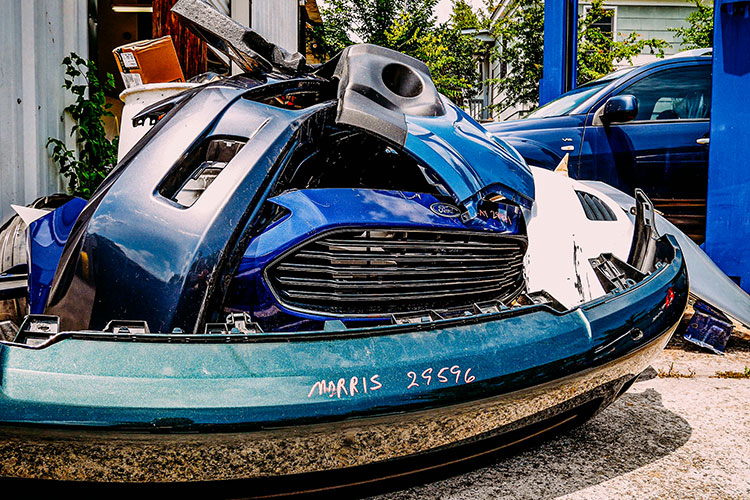What you need to know about Damaged Bumper
Most accidents referred to as fender benders more likely fit the description of “bumper benders.” The exterior bumpers on the front and rear of your vehicle are more or less a cosmetic shell of the physical bumpers that play a vital role in minimizing the damage caused by collisions. A bumper bender definitely affects the visual appearance of your vehicle, but underneath the facade collisions can effect the structural integrity.
If you have recently suffered damage to your car’s bumper a little knowledge can go a long way toward helping you make the right decisions. Here is some info on bumpers and collision damage to help you make informed decisions.
How Bumpers Work in a Collision
Bumpers reduce the overall impact forces conveyed by a collision impact, but their reason for being is not to actually protect occupants. Instead, your vehicle’s frame crumples in strategic areas to protect you and your passengers from injury by absorbing the force of the collision. The bumpers serve mainly to protect vehicle parts such as radiator, cooling systems, exhaust system, hoods, fenders, headlights, and taillights that are more expensive to replace or repair.
Today’s bumpers offer a combination of light weight and shock absorption properties. While classic cars and modified vehicles may sport exposed steel bumpers, the majority of modern car bumpers are now a system that consists of an outer plastic shell supported by an inner combination of plastics, polypropylene foam, steel or aluminum, that is connected to the frame.
Damage a Bumper can Sustain
In a light collision, the bumper can prevent any serious damage elsewhere from occurring. Even so, a glancing blow can scrape the paint, crack the outer plastic, or leave a layer of the other car’s paint on your exterior. More severe impacts will cause a damaged bumper to split open, dent, or crumple inward.
An impact can also damage the hooks that attach the bumper to your car. In this situation, one end of the bumper may sag awkwardly or drag along the ground. If both hooks break, your entire outer bumper assembly may simply fall off.
When a Damaged Bumper Needs Attention
A damaged bumper doesn’t protect your car from damage as it normally would. While you might have no trouble driving with the damaged bumper, the next impact could do serious harm to critical components. As a result, you may have to repair or replace parts of your cooling or exhaust systems, hood, trunk, or body panels.
A loose bumper presents its own set of potential hazards. Even if the bumper hasn’t yet detached from the car, the vibrations from continued driving may loosen it further. If your bumper comes off, it might either collide with another vehicle or get underneath your own vehicle’s wheels, which could cause you to lose control of the vehicle and potentially have another accident.
When Should You Replace a Damaged Bumper Instead of Repairing It?
A damaged bumper that has sustained only scratches or other surface damage may simply need some basic repair efforts. Hollingsworth Auto’s collision repair technicians can often smooth or pull the dents out of modern plastic bumpers. Our experts know how to repair bumper scratches and scuffs quickly and effectively. Your auto body technicians will clean and sand the area in need of repair before applying filler and paint to create a flawless final result.
However, if the repair requires extensive work, sometimes you have no choice but to replace the entire bumper. This situation may occur whenever the metal support beam or hooks have sustained irreparable damage. You may also need a full replacement if your bumper is split, severely cracked, or contains lighting, parking assist, or blind-spot monitoring system.
The auto body experts at Hollingsworth Auto have the skills, tools, and experience to evaluate damaged bumper, recommend the right solution, and then perform the necessary fixes. Call Hollingsworth Auto Service today at: 912.234.6651.










